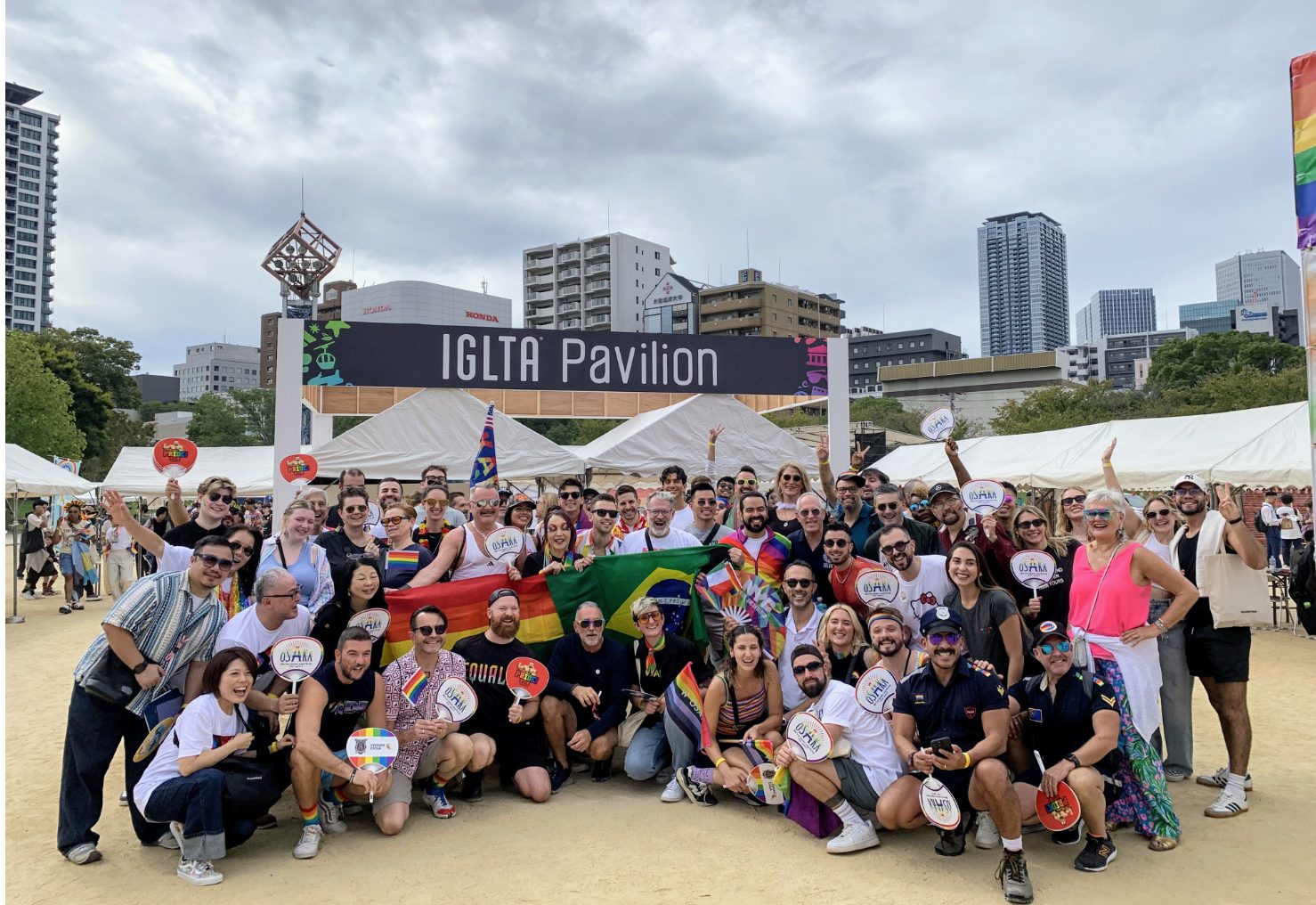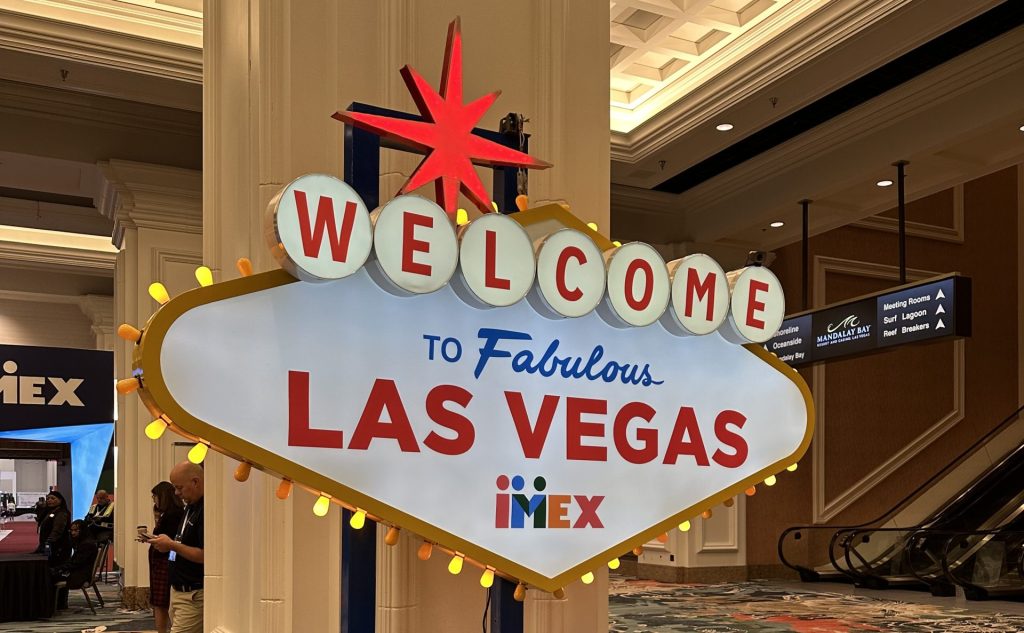Reams of literature have been dedicated to the madness and magic of Mumbai. It is the setting for Maximum City, the City of Love and Longing and is the city in Midnight’s Children. As the home of “Bollywood”, the world’s second largest film industry, it is also known as India’s City of Dreams. Mumbai is vested with an almost mystical quality, not least because it is India’s financial capital and home to more than 20 Forbes-listed billionaires. It’s one of the world’s 10 leading cities for business process out sourcing. As a result, it attracts significant inbound meeting and incentive based traffic brought in by the scores of multinationals that have set up shop here. What is particularly interesting, though, is that Mumbai is fast emerging as a meetings destination for clients from Europe, the US, Southeast Asia and as far afield as South America, who do not necessarily have operations in India… or at least not yet. Clearly, the city is attracting business on the strength of its own appeal.

Gate of India, Mumbai
What’s wrong
At first glance, however, Mumbai does not have any obvious attractions for business meetings. It’s a teeming, crowded sliver of real estate, one of the most expensive property markets in the world. It floods every monsoon, and its traffic woes are legendary.
Indeed, Mumbai actually has a very limited meetings and incentives infrastructure. Amaresh Tiwari, managing director of AT Seasons & Vacations Travel India, says: “In September 2012, we had difficulty finding a venue for 2,000 delegates to the Indian Association of Tour Operators convention. We were actually forced to reduce the number of delegates. The city really needs convention facilities for large scale conferences.”
Vikram Madhok, managing director of Abercrombie & Kent, agrees: “Mumbai is a logistical nightmare because of the traffic.”
What’s right
Yet, against the odds, Mumbai does attract meetings and events. The reasons are often pragmatic. Mumbai’s air connectivity, for instance, is unbeatable, and with every major hotel chain present in the city, there’s no shortage of accommodation. For small to mid-sized groups, there’s also no shortage of sophisticated conference facilities.
Although less common, larger capacity meeting spaces can be found. JW Marriott’s Renaissance Mumbai Convention Centre Hotel, for example, can handle conferences of up to a 1,000 people, and the Trident can accommodate roughly 600 delegates.
India’s growing appeal as an events destination can also be attributed to the weaker Indian rupee. Over the last two years, the currency’s value has depreciated by around 25 per cent. Armed with greater buying power, more clients are now including event add-ons like cultural shows and excursions. Pre and post-tours, meanwhile, are helped by Mumbai’s easy access to a whole range of leisure destinations. The city is serendipitously situated to offer easy access to India’s most loved tourist hot-spots to the north and south: Goa, Kerala, Udaipur, Jodhpur, and the Golden Triangle are all a short hop away. All of these lend themselves perfectly to convenient two-night, three-day post-meeting getaways.
An exciting new project that is already under way is the introduction of seaplanes to Mumbai’s sky. The Cessna 208 aircraft has a capacity of nine passengers and will open up sites like Tarkarli, Harihareshwar and Ganpatipule on the scenic Konkan coast. Kerala and all its delights will be a thrilling 25-minute ride away by the sea-taxis.
Mumbai masala
Such potential for excursions does not mean that MICE wallahs are disinterested in the city itself. Indeed, of late many travellers have shown particular interest in the captivating lure of Bollywood.
Bollywood Tourism – a tour operator that started out helping international filmmakers organise essential permits and acting as location scouts – now finds itself flooded with requests to organise on-set Bollywood theme parties for companies. The firm has recently expanded into organising Bollywood themed games and workshops in acting, Bollywood-style dancing, make-up and hair-styling.
Indeed, the popularity of the Bollywood experience is such that the local market is now flooded with all manner of low-priced Bollywood tours. When the suits are done discussing "Best Practices" and "Benchmarks", they kick off their shoes, unbutton their shirts and pile into buses that take them to all the iconic Bollywood shrines, from Amitabh Bachchan and Shah Rukh Khan’s homes to RK Studio, Film City, Yash Film Studio and Whistling Woods.
It’s also possible to have a movie star or two dance or mingle at your corporate party. According to Bollywood Tourism’s director Harish Kale, having stars attend events is more than entertainment, they reinforce your corporate branding: “At parties, we throw in a surprise Bollywood element that makes the event and the corporate profile of a company truly memorable.”
Maximum city
Abercrombie & Kent’s Madhok recognises the popularity of Bollywood but, he says: “Bollywood has nothing that is the equivalent of a Universal Studios which offers the visitor a complete orchestrated experience. Bollywood tours are usually a hit or miss. Instead, what we offer our elite groups, is a chance to dine at an upper-crust private home, or a stylish dinner at the Prince of Wales Museum, or the National Gallery of Modern Art or the very genteel, colonial-era Willingdon Club.”
For the most part, city tours that take in iconic Mumbai sites such as the Gateway of India, the Victoria Terminus and the Elephanta Caves continue to be on most group itineraries. Increasingly popular, though, are tours which lead guests to places which have appeared in works of literature. Shriti Tyagi’s Beyond Bombay tours, for instance, are excursions to facets of the city immortalised in Gregory Robert’s best-selling novel Shantaram; Suketu Mehta’s non-fiction exposé Maximum City and, of course, in the Oscar-sweeping movie Slumdog Millionaire.
Similarly, Deepa Krishnan’s tour company Mumbai Magic organises offbeat tours using the iconic black-and-yellow taxis of Mumbai. Enthusiastic street children act as guides, showing you the city as they see it every day — alive, vibrant and on the move. These are tours precision-designed to customer tastes, and what is more surprising than the “reality” tours themselves is the interest they generated in even straight-laced corporate groups. Clearly, as the meeting and incentive market has shown, such travellers are more nuanced than one would suspect.

Colourful villager
Significant issues
As attractive as India seems, it’s important to note that the country does lack infrastructure from a MICE perspective. Mumbai in particular suffers from serious traffic problems, safety and security issues, a lack of public amenities, facilities and cleanliness. These are all significant issues that meeting planners have to consider – Mumbai cannot even compare itself to Macau let alone Bangkok, Hong Kong or Singapore. What saves the day, however, is the ability of intrepid travel management companies to whisk their groups from one oasis of luxury to another whilst keeping uncomfortable realities at bay.
India, and Mumbai in particular, is a world of extreme paradoxes. There are bubbles of luxury – world-class hotels, high-end shopping experiences, sumptuous forts and palaces and beautifully packaged cultural experiences. These bubbles, though, float on an ocean of other, more complex realities.
Tour operators here have perfected the art of a smooth, seamless, insulated ride from one bubble to another. Delegates can expect an integrated accommodation, conference and event experience in any one of Mumbai’s high-end hotels. There are plenty to choose from, including the Oberoi, the Taj, the Grand Hyatt, JW Marriott, Ramada and others. This can be followed by a private charter to Jodhpur where you could sip fine wines on the ramparts of a medieval fort, dine with the rajah or spend an evening on the dunes reclining on Persian rugs whilst being entertained by the exotic dancing women of the desert. If there is a different India beyond this, you need never meet it.
Suitability and scale
Mumbai as an event destination works best for small to mid-sized groups of up to 400 people. Meanwhile, the India Convention Promotion Bureau (ICPB) has its work cut out for it. Although it is taking measures to promote MICE at EIBTMs in Barcelona and
Frankfurt, and at the IMEX meets in Frankfurt and Vegas, many real logistical issues have yet to be addressed. First among these is the necessity for a single-window visa clearance for conference attendees. At present, this is a difficult process which requires multiple clearances. Meanwhile, Chander Mansharamani, vice-chairman of the ICPB, has assured the MICE trade that the government plans to address the issue, promising an announcement in the very near future.
Mark Sirk, CEO of the International Congress and Conventions Association (ICCA), says: “A revolution in MICE infrastructure and the way the business is regarded is required to further India’s MICE business development. India has tremendous potential for attracting international events because of its status as an economic powerhouse. One has to understand, though, that MICE is not just a tourism business. Business considerations take a front seat when a company plans its event. India needs better convention venues in major cities like Delhi and Mumbai. Above all, ?there needs to be a shift in the way the MICE business is regarded by the government and private sector players. The focus should move away from the immediate bottom line and become more long-term oriented.”
POST-EVENT TOURS
Coupled with Mumbai’s central location, the hundreds of daily flights that connect the city to the rest of the country mean that you can pretty much take your pick of exotic and evocative places to go post-event.

Martial arts in Kerala
Rajasthan
It’s hard to go wrong with Rajasthan. Indeed, with its monumental architecture, history, colourful culture and endless shopping delights, to most visitors Rajasthan is India. There may be forts and palaces elsewhere in the country, but nowhere else is the experience so exquisitely packaged. Almost all the palace hotels in Rajasthan are equipped to lay out the full royal fantasy, with vintage cars, elephant polo, mock royal weddings, a banquet under the stars on the ramparts of a fort, or tribal dances by firelight in a tented desert encampment.
Jaipur
In Jaipur, tour managers can arrange a ride on a caparisoned elephant to the medieval citadel of Amber, followed by a round of elephant polo and an elegant champagne luncheon. Just a three-hour drive away is Ranthambore National Park, home of the Royal Bengal tiger. After jungle safaris and bird-watching expeditions, guests are invited to luxuriate at their hotel, enjoying the pleasures of Ayurveda massages, a heated pool, or a visit to an art school.
Udaipur
This should be at the top of everyone’s bucket list. A short flight out of Mumbai takes visitors to this romantic city of lakes, legends and hill palaces. There are easy tours of the city, the nearby 15th century Hindu temple complex at Eklingji and the magnificent ruins of Nagda, as well as trips to the 15th century Jain temple of Ranakpur, with its intricately wrought marble.
Udaipur
This should be at the top of everyone’s bucket list. A short flight out of Mumbai takes visitors to this romantic city of lakes, legends and hill palaces. There are easy tours of the city, the nearby 15th century Hindu temple complex at Eklingji and the magnificent ruins of Nagda, as well as trips to the 15th century Jain temple of Ranakpur, with its intricately wrought marble.
Jodhpur
This too is an easy flight out of Mumbai. This desert outpost is quintessential royal Rajasthan with citadels, palaces, camels and colourful local bazaars. Visitors can take a drive through the indigo-painted city in a vintage car, accompanied by a royal butler. The excursion can be followed by a tour of the Mehrangarh Fort, the Old City, the colourful bazaars and the royal cenotaphs at Jaswant Thada. Then, there are sorties to tribal villages, or a camel safari in the dunes.
Kerala
Kerala is one of the most popular destinations for post-event tours from Mumbai. Its plantations, emerald paddy fields, tranquil backwaters, wildlife and exotic culture are all perfectly packaged and delivered to the business delegate in an easy, bite-sized experience. Kerala has the natural beauty, the infrastructure and the delivery systems.
Kochi
Kochi, is around two-hour flight time from Mumbai and is a melting pot of cultures, including Portuguese, Chinese and Jewish. Each left their mark on the city’s architectural heritage, cuisine and performing arts. Visitors are invited to cruise the backwaters or watch a haunting Kathakali theatrical performance in a temple courtyard. At nearby Kumarakom, you can unwind on a palm-fringed beach or board a luxuriously refurbished rice boat for a journey through the backwaters.
FAST FACTS
CLIMATE The monsoon season heat and humidity is best avoided – it begins in the far south in late May and moves north gradually over a six-week period. Generally, the winter season from October to February is the best time to visit.
ACCESS Mumbai is the main international gateway to southern India and has a network of domestic flights that connect directly to over 30 Indian cities. The Chhatrapati Shivaji International Airport is 4km away from the domestic airport with free shuttle bus service between the two. The airports are roughly 30km from Nariman Point in downtown Mumbai. The international airport has two arrival halls which have foreign-exchange counters, a Government of India tourist office booth and a prepaid taxi booth – all open 24 hours.
VISA Tourist Visa-on-Arrival (T-VoA) for up to 30 days is granted to citizens of 11 countries: Cambodia, Finland, Indonesia, Japan, Laos, Luxembourg, Myanmar, New Zealand, the Philippines, Singapore and Vietnam (for tourism purposes only). T-VoA is issued only at the designated international airports of Delhi, Mumbai, Chennai and Kolkata and costs US$60. Citizens of other countries must apply for specific visas – including Tourist, Business or Conference categories – at Indian embassies worldwide. Visithttp://indianvisaonline.gov.in/visa
LANGUAGE India has many regional languages but English is widely spoken.
CONTACT www.incredibleindia.org
THE PROFESSIONALS
KW Conferences
email: moni@kwconferences.com, www.kwconferences.com
Abercrombie & Kent
email: vmadhok@abercrombiekent.co.in, www.abercrombiekent.co.in
Creative Travel
email: rajeevkohli@travel2india.com, www.planit-india.com
ICES
email: shyamnagpal@gmail.com, www.icesindia.com
MCI Management, India
email: priti.khanna@mci-group.com, www.mci-group.com


